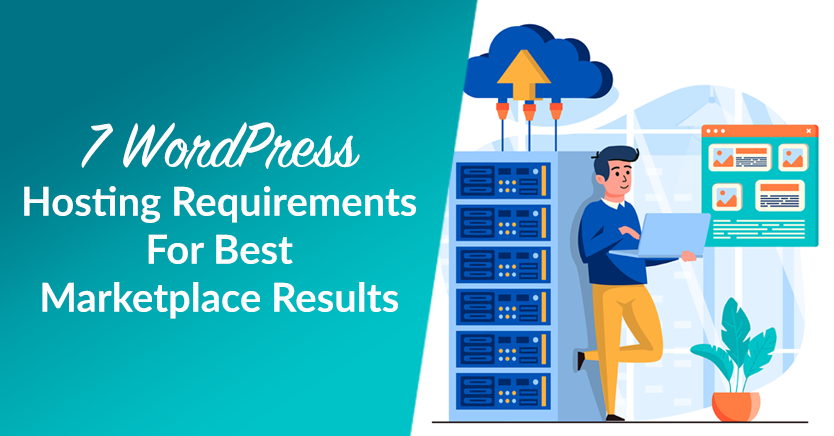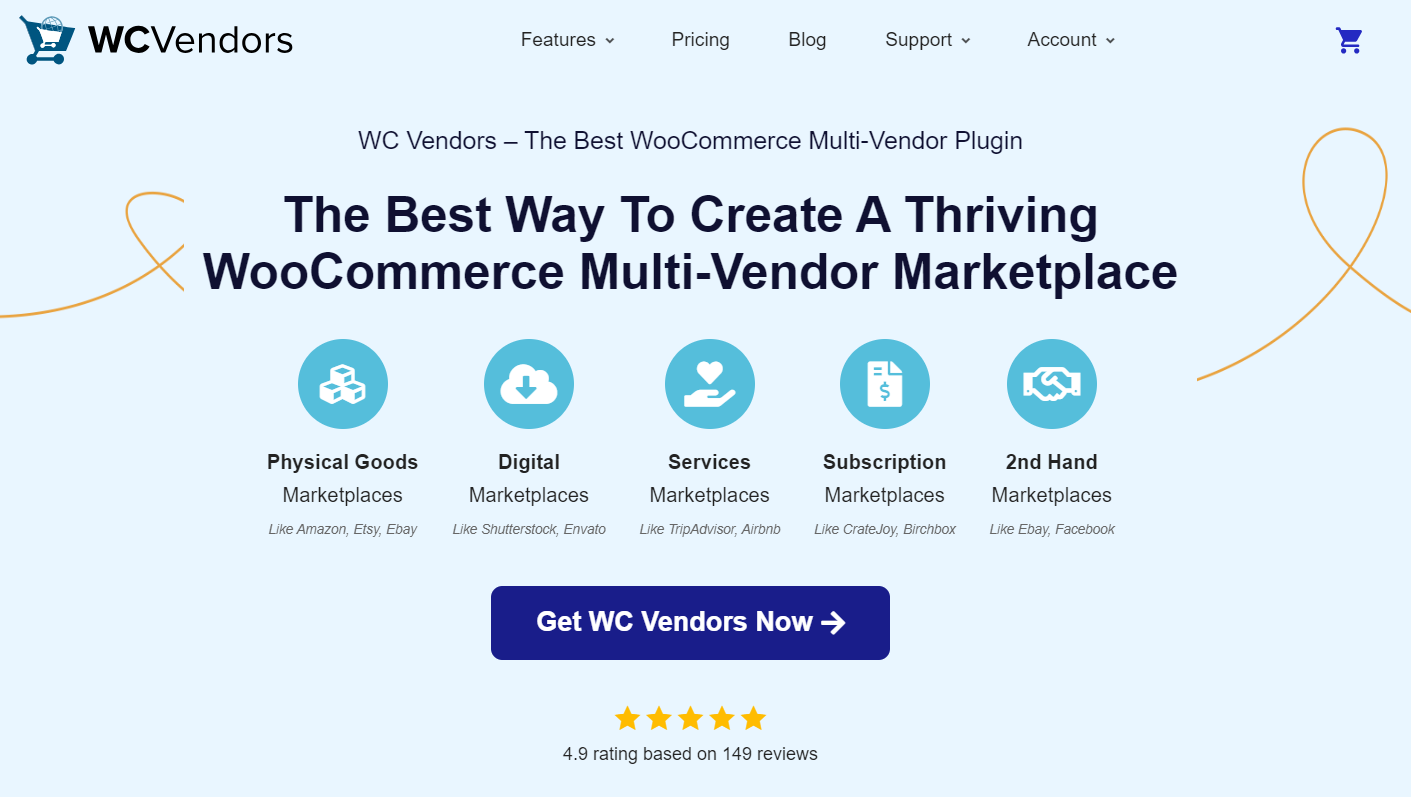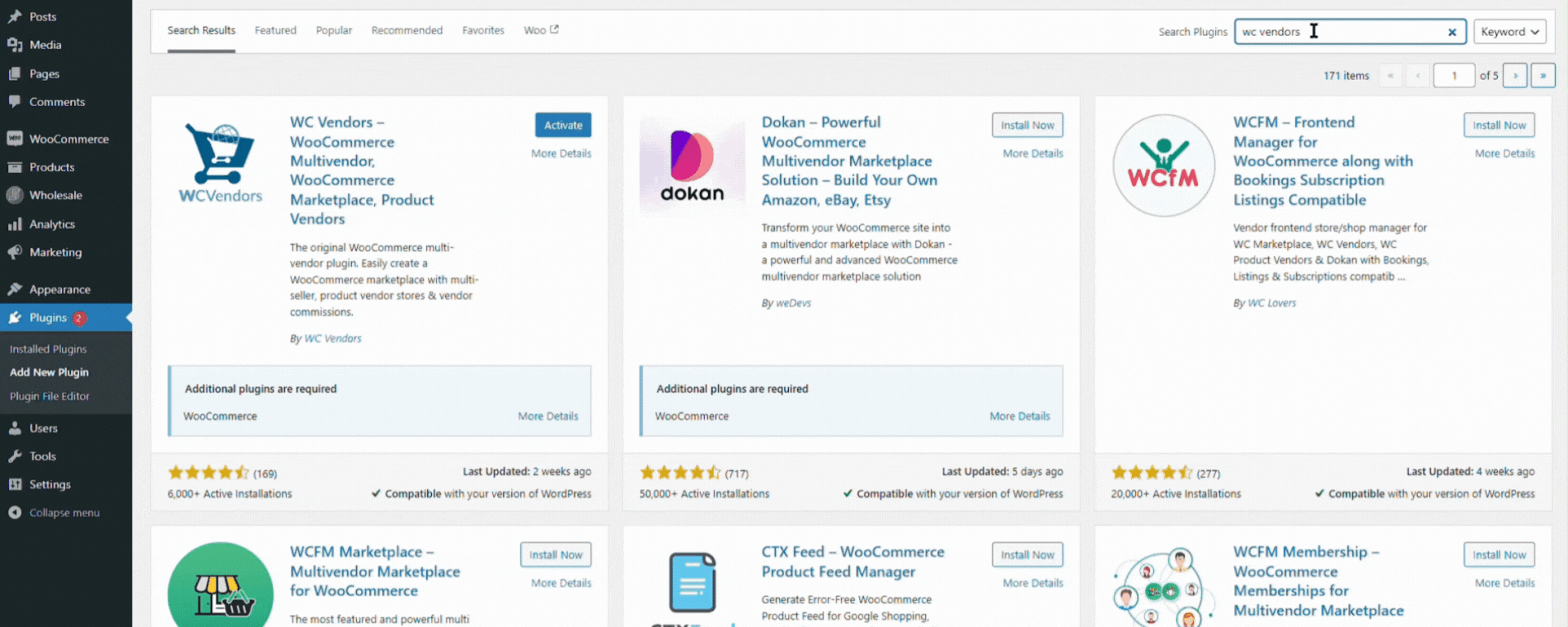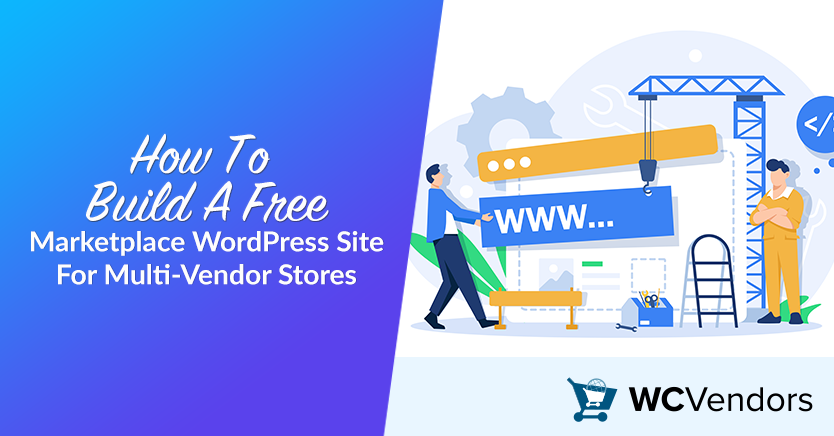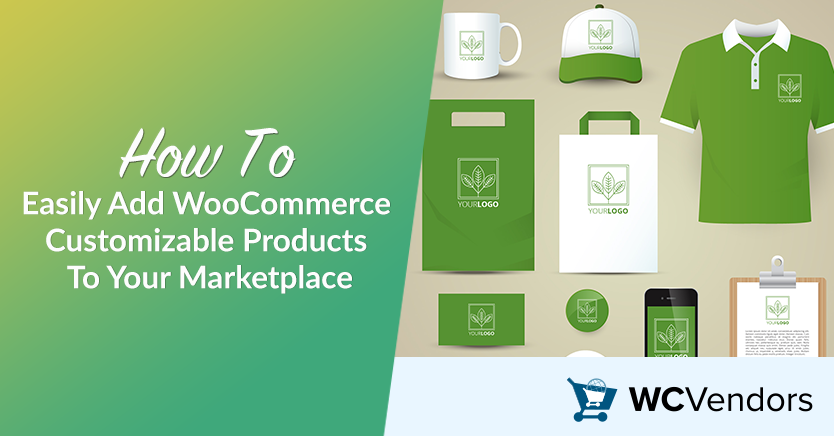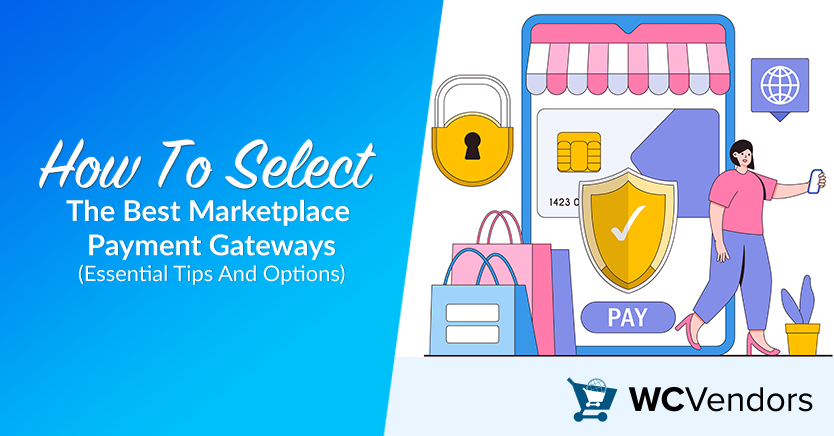
If you have been searching for a way to create a successful e-commerce website, a multi vendor marketplace platform might be the answer. It’s an exciting and efficient way to connect buyers with multiple sellers on one platform. This approach not only helps you grow faster but also makes managing an online store easier.
With that said, we’ll explore everything you need to know to start your own multi vendor marketplace, and why WordPress can be an ideal choice for this kind of business.
Let’s get to the nitty-gritty details!
What Is A Multi Vendor Marketplace?
A multi vendor marketplace platform is essentially an online marketplace where multiple sellers can list their products, and buyers can purchase from different vendors all in one place. This model benefits both vendors and marketplace owners. Vendors get an established platform to sell their goods, while marketplace owners earn commissions from each sale. The multi vendor model is particularly attractive to entrepreneurs looking to build a scalable passive income stream.
Is WordPress Good As Multi Vendor Marketplace Platform?
WordPress is one of the most popular platforms for building a multi vendor marketplace platform. It is a content management system (CMS) that is easy to use, flexible, and highly customizable. With WordPress, you can create a professional-looking marketplace without needing to know how to code.
One of the reasons WordPress works so well for a multi vendor marketplace is because of its vast range of plugins. Plugins like WooCommerce and WC Vendors transform a simple WordPress site into a powerful multi vendor platform. This makes WordPress a go-to choice for many small businesses and entrepreneurs.
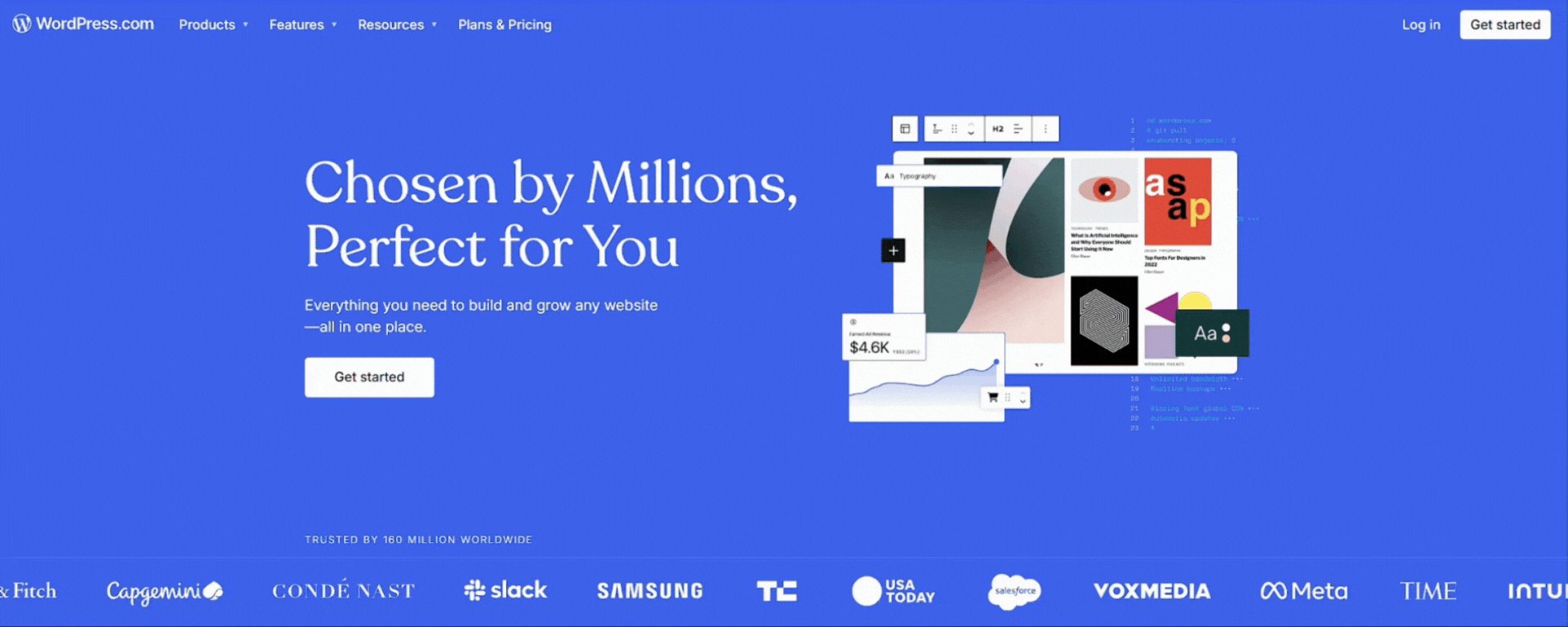
WordPress is also scalable, meaning your marketplace can grow with you—whether you start small or expand quickly!
Another key advantage of WordPress is its open-source nature. This means that it is constantly being improved by a global community of developers. You have access to thousands of free and premium themes that can help you customize the look and feel of your marketplace, to ensure it meets your brand’s needs. The flexibility of WordPress allows you to add as many features as you like, which makes it an excellent platform for a growing marketplace.
With a wide variety of themes and customization options, you can make your multi vendor marketplace look and feel exactly how you want it to. WordPress provides the perfect blend of user-friendliness, powerful features, and adaptability—making it ideal for building a successful multi vendor marketplace.
Benefits Of Multi Vendor Marketplaces
A multi vendor marketplace platform has numerous advantages for both sellers and buyers. Here are ten key benefits that make a multi vendor marketplace a great business model:
1. Cost-effective
Creating a multi vendor marketplace is cost-effective because you don’t need to maintain inventory. Instead, individual vendors manage their own stock. This setup reduces your costs, which allows you to focus on building and managing the platform itself. Since you do not have to invest in inventory, the initial costs are much lower compared to traditional e-commerce stores.
2. Variety of products
A multi vendor marketplace offers a wide variety of products. With multiple vendors selling on one platform, customers have more options to choose from, making your marketplace a one-stop shop. This wide range of products helps attract more customers, as they are more likely to find what they are looking for on your platform. Offering diverse products also helps build customer loyalty because shoppers can meet all their needs in one place.
3. Shared responsibility
In a multi vendor marketplace, vendors are responsible for their own products. This means less work for you when it comes to managing inventory, order fulfillment, or customer support. The vendors handle most of the logistics, while you focus on growing the platform and improving the customer experience. This shared responsibility helps you scale your business faster and reduces the risk of operational challenges.
4. Increased traffic
With more vendors listing products, your marketplace attracts more customers. Vendors often promote their products, which indirectly promotes the entire platform, bringing more traffic. Each vendor has their own audience, and by listing on your platform, they bring their audience with them. This collaborative effort helps drive more traffic to your site, increasing visibility and sales opportunities for all vendors.
5. Better customer experience
Since customers have access to a wide range of products from different sellers, they are more likely to find exactly what they need. This variety improves their overall shopping experience. Customers can compare products from different vendors and choose the best one that fits their needs. A diverse product catalog and competitive pricing lead to a more satisfying shopping journey, ultimately encouraging repeat business.
6. Passive income
Multi vendor marketplaces generate passive income through commissions on sales. Each time a vendor makes a sale, you earn a percentage. This provides a steady income stream without actively managing individual products. By setting up clear commission structures, you can ensure that you earn a fair income from each sale, allowing you to focus on scaling the marketplace rather than managing inventory or fulfilling orders.
7. Scalability
A multi vendor marketplace is scalable. You can add more vendors as your platform grows, increasing the number of products available and enhancing the overall value of your marketplace. The scalability of a multi vendor platform allows you to expand into different niches or product categories, providing flexibility in how you grow your business. Whether you start with a few vendors or hundreds, your marketplace can easily grow as you bring more sellers on board.
8. Reduced risk
With multiple vendors, the risk is spread out. If one vendor struggles, others are still there to maintain the marketplace’s overall success, which reduces your risk as the owner. The multi vendor model protects your income stream because it is not dependent on a single vendor. Even if a vendor decides to leave the marketplace, the impact on your business is minimal because other vendors continue to bring in sales. This diversification of vendors mitigates risk and ensures business stability.
9. Competitive pricing
Multiple vendors selling similar products naturally creates competition, leading to competitive pricing. This benefits customers by providing them with more affordable options. Vendors are motivated to price their products competitively to attract more buyers, which helps in offering the best value to customers. As a marketplace owner, competitive pricing is an asset because it draws more shoppers to your platform, increasing overall sales.
10. Enhanced marketing
Vendors often bring their own customer base and do their own marketing, which indirectly benefits your marketplace. This means free promotion for your platform, making it easier to grow. Additionally, by collaborating with vendors on joint marketing campaigns, you can amplify your reach without significant additional costs. Each vendor’s marketing efforts contribute to the visibility of the entire marketplace, providing a collective benefit.
How To Start A Multi Vendor Marketplace
Starting a multi vendor marketplace may seem daunting, but it can be broken down into easy steps. Follow these steps to get started and create a thriving marketplace!
1. Choose a free multi-vendor plugin
Many hosting providers have a one-click installation feature that makes the process simple. Just follow the prompts, and you’ll be ready to start building your site! WordPress is known for its user-friendly interface, making it easy for beginners to set up their sites. At the same time, you can explore CMS features that help manage content and organize your site efficiently.
Once WordPress is installed, you can start customizing your site to fit your marketplace needs.
Learn more about WordPress hosting in our article: 7 WordPress Hosting Requirements For Best Marketplace Results.
To transform your WordPress site into a marketplace, you’ll need a multi-vendor plugin. WC Vendors is an excellent choice for this purpose. It provides vendors with their own dashboard where they can manage products, view sales, and track earnings.
Basically, WC Vendors allows you to manage vendors, set commission rates, and handle payments—all from within your WordPress dashboard. When you use this tool, you can provide a seamless experience for your vendors and ensure that they have all the tools needed to succeed on your platform.
Install WC Vendors by navigating to the Plugins section in your WordPress dashboard, click Install, then configure the settings to suit your marketplace needs.
2. Apply theme
A professional look is essential for your marketplace. Choose a free theme that supports multi-vendor functionality, such as Storefront or Astra. These themes are both clean and highly customizable.
Basically, a good theme ensures that your marketplace is visually appealing and easy to navigate, which helps attract and retain customers. The right theme will also ensure that your marketplace is responsive, meaning it works well on both desktop and mobile devices.
3. Customize your marketplace
Once your theme and plugins are in place, customize your site to align with your brand. Add your logo, create navigation menus, and set up essential pages like the homepage, shop page, and vendor registration page. Customization is important because it differentiates your marketplace from others and helps establish your brand identity. Make sure to also add categories and product filters so that customers can easily find what they are looking for.
When customizing your site, consider the user experience. A well-structured site makes it easy for both vendors and customers to navigate. Use intuitive menus, clear calls to action, and simple forms to guide users through the site. Adding a FAQ page and a help center can also improve user satisfaction by addressing common questions.
You can learn more how to customize in your marketplace by reading our article: How To Easily Add WooCommerce Customizable Products To Your Marketplace.
4. Add payment gateways
A functional payment system is crucial for your marketplace. WC Vendors integrates well with payment solutions like Stripe. Set up these payment gateways to ensure smooth transactions between customers and vendors. Adding multiple payment options makes it easier for customers to make purchases, which can increase your conversion rate.
When setting up payment gateways, consider the needs of both your customers and vendors. For example, you may want to offer different payout schedules, such as weekly or monthly payouts, to keep your vendors happy. Security is also a top priority—ensure that your payment gateways are secure to protect both customer and vendor information.
One smart way to streamline this process is by using Stripe Automatic Payments. It allows for fully automated vendor payouts, eliminating the need for manual transfers. This not only saves time but also builds trust by ensuring vendors are paid accurately and on time.
Read more about marketplace best payment gateways here: How To Select The Best Marketplace Payment Gateways.
5. Send invitation to vendors to join your marketplace
With your site set up, it’s time to attract vendors. Use social media, email marketing, and incentives like low commission rates to bring in sellers. The more vendors you have, the more attractive your marketplace becomes to buyers. To attract quality vendors, highlight the benefits of joining your platform, such as increased visibility, easy management tools, and access to a larger customer base.
You can also create a vendor onboarding process that guides new sellers through setting up their profiles, listing products, and managing orders. A smooth onboarding process ensures that vendors have a positive experience from the start, which can lead to long-term partnerships. Consider offering promotional support for new vendors, such as featuring their products on the homepage or sharing their listings on social media.
Frequently Asked Questions
Is multi-vendor marketplace profitable?
Yes, a multi-vendor marketplace can be very profitable. The marketplace owner earns a commission from each sale, which creates a steady income stream without managing inventory directly. Profitability depends on attracting quality vendors, offering a great user experience, and building a loyal customer base. As your marketplace grows, so does your potential to earn.
Multi vendor marketplaces benefit from economies of scale—more vendors mean more products, which means more customers, leading to increased revenue opportunities. Additionally, having multiple vendors helps mitigate risk, as you are not reliant on a single product or supplier.
Is Amazon a multi-vendor marketplace?
Yes, Amazon is one of the most well-known multi-vendor marketplaces. It allows third-party sellers to list and sell products, providing a wide range of options for customers. This model has allowed Amazon to offer millions of products from various categories, giving customers access to an unparalleled variety.
Amazon’s success as a multi vendor marketplace is largely due to its ability to attract and manage a vast number of vendors, ensuring quality control, and providing a seamless shopping experience. It sets the standard for how multi vendor marketplaces can operate on a large scale.
How do marketplace platforms work?
Marketplace platforms connect buyers and sellers. Sellers list their products on the platform, and buyers can browse and purchase. The marketplace owner typically earns a commission on each sale. The platform provides the infrastructure for transactions, including payment processing, product listing, and customer management.
The marketplace owner is responsible for maintaining the platform, ensuring security, and providing a good user experience. Vendors are responsible for listing their products, managing inventory, and shipping orders. The combination of shared responsibilities and a broad product offering makes marketplace platforms attractive to both vendors and customers.
Why use multiple vendors?
Using multiple vendors increases product variety, attracts more customers, and reduces risk. It also creates competition, which helps keep prices competitive and enhances the shopping experience. With multiple vendors, customers are more likely to find what they are looking for, which increases satisfaction and retention.
Additionally, multiple vendors contribute to the growth of your platform through their own marketing efforts, helping to attract more traffic. The diversity of products offered by different vendors makes your marketplace more appealing, positioning it as a comprehensive shopping destination.
Conclusion
A multi vendor marketplace platform is a powerful business model that benefits both marketplace owners and vendors. When you use WordPress and plugins like WC Vendors, you can create a cost-effective, scalable, and profitable online marketplace.
This guide has covered the essential information to learn about multi-vendor platforms:
- What is a multi vendor marketplace?
- Is WordPress good for a multi vendor marketplace?
- Benefits of multi vendor market places
- How to start a multi vendor marketplace
Building a successful marketplace takes time and effort, but the rewards can be significant. With the right approach, your multi vendor marketplace can become a thriving hub for online commerce. Take advantage of the power of WordPress, WC Vendors, and your creativity to build a marketplace that stands out.
Remember, success comes from providing value to both sellers and buyers, and by making your platform the ideal space for ecommerce.
What are your thoughts about this article? Let us know in the comments!


